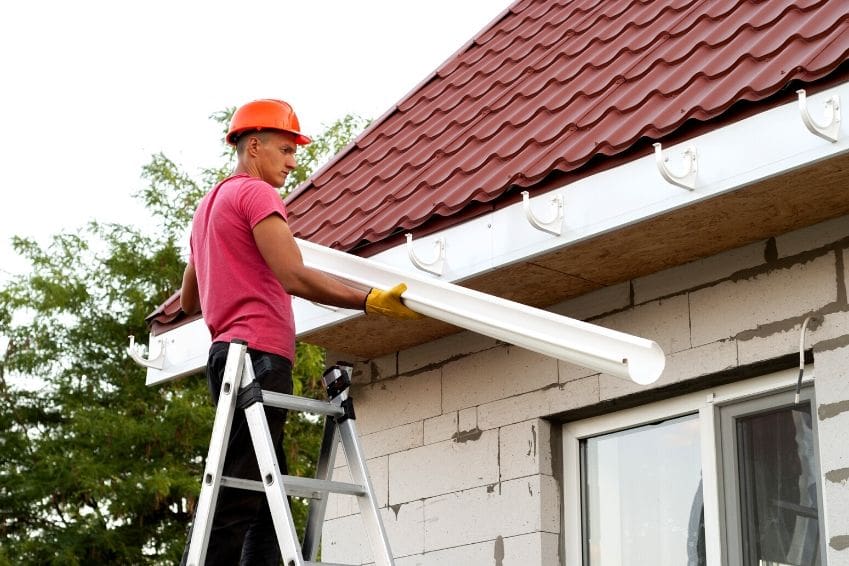
Many homeowners take great pride in their residences, and they want to be in control of every project or renovation. Amateurs can complete some home projects on their own, but only a professional should complete certain types of projects—including gutter installation.
Below you’ll find some of the most common DIY gutter installation mistakes people make. Take note of these before you attempt this type of project—or better yet, call a professional to handle it.
1. Choosing the Wrong Gutter Type
One of the biggest mistakes people make with their DIY gutter installation is choosing the incorrect type of gutters. Size of the home and the regional rainfall impact which type of gutter you should use.
Seamless gutters are usually the best choice of gutters, especially for Maryland residents who experience varying levels of rainfall and weather conditions.
It’s important to decide between half-round gutters, K-style gutters, and fascia gutters. Each of these styles can use different materials, depending on your budget and preference. These materials include aluminum, copper, zinc, or even vinyl.
You can also pick between sectional and seamless gutters. Sectional gutters are cheaper, but misplacing the seams can cause more issues in the future.
2. Choosing the Wrong Gutter Size
Another common issue many homeowners experience leading to incorrect gutter installation is choosing the wrong size. The gutter size will depend on the amount of rainfall your area receives and the layout of the home.
The steeper the roof pitch, the more rainwater will collect.
Don’t forget about snow and ice: cold climates risk ice dams building up in the gutter systems. This may require heat cables to melt any ice that blocks the gutters or downspouts.
3. Incorrect Gutter Hanger Placement
Some people make the mistake of placing their gutter hangers too far apart. Gutter hangers that are spread too far can sag and possibly break.
A sagging gutter can cause water to overflow, which may cause the landscape near a home’s foundation to erode. This could weaken the foundation and even cause a flooded basement.
Gutter hangers should be spaced approximately two to three feet apart from each other.
4. Improper Roof Pitch Calculation
Failing to account for the roof pitch can cause its own issues. Rainwater should travel down your roof directly to your gutter and downspouts.
If it’s not steep enough, water can pool and damage your roof. This can lead to mold to grow and weaken the structure. Ultimately, DIY gutter installation can lead to a mistake with this and cause further structural issues.
5. Improper Safety
Of course, doing any outside DIY gutters project without the proper knowledge can increase the chances of injuring yourself. When dealing with great heights such as with your gutter system, you can fall or put yourself at serious risk of doing so. Even with someone helping you, you could still end up in the emergency room.
For these reasons, you should always allow a professional gutter technician to take care of your gutters. Fortunately, we at Gutter Maid specialize in rain gutter installation and repair.
